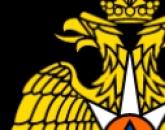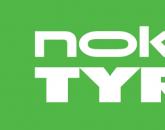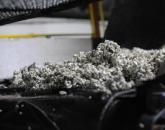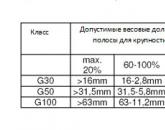Own sources of reproduction of fixed assets are. Sources of financing the reproduction of fixed assets of the enterprise
(OS) may be different. Consider what they are and in what situations each of them is used.
Ways for OS to enter the organization
Sources of fixed assets financing are determined not only by the origin of the money invested in them, but also by the peculiarities of the ways in which fixed assets enter the organization. OS for a legal entity may arise:
- as a contribution to the UK;
- free of charge (as a result of finding or donation);
- at the time of buying;
- when renting;
- under an exchange agreement;
- through creation (construction).
If the organization is single-handedly involved in the first 4 ways, then the creation (construction) can be shared, i.e. joint for several participants in this process.
Types of funding sources
Sources of fixed assets financing are divided into:
- internal;
- external.
Internal (own) include:
- depreciation of fixed assets and intangible assets;
- capital (both UC and profit).
External sources are third-party tools:
- borrowed (credits, loans);
- involved.
In the process of financing, sources of funds can be combined. The organization has the right to independently determine the share of participation of each of them in the payment of fixed assets. More preferable for assessing the financial position of a legal entity in terms of financial stability is the predominance of own sources over external ones.
Application of own sources
The use of exclusively own sources indicates the financial independence of the organization and allows it to:
- promptly resolve issues related to the acquisition (creation) of OS;
- not to be spent on paying the expenses accompanying the use of credits (loans).
Of these, the most important are:
- depreciation, which allows you to gradually transfer the cost of operating fixed assets to costs, thereby giving the legal entity the opportunity to receive additional working capital for the current replacement of worn-out funds (simple reproduction) or bringing them up to modern requirements through modernization (reconstruction);
- net profit, due to which expensive acquisitions are made and equipment for new activities is bought (extended reproduction).
Features of borrowed sources
Borrowed sources are resorted to in case of insufficiency own funds for the acquisition (creation) of OS. What distinguishes them is the presence of additional costs associated with the payment for the provision (use) of these funds, and the existence of terms for the return of the borrowed. Receiving large amounts usually requires the issuance of collateral in the form of guarantees or pledges of property.
Two types of borrowed funds can be used for the acquisition (creation) of fixed assets:
- Received without specifying the purpose of their use, which allows them to be spent without special control of the party that issued these funds, and only part of them can be invested in the OS. The interest paid on such borrowings will not affect the initial book value of the asset.
- Purpose, i.e., intended for the acquisition of a specific OS. In this case, the party providing these funds will require a report on their spending. The interest paid for them, until the moment the fixed asset is put into operation, will form the initial cost of the object in accounting.
Leasing is considered to be a type of borrowed source of OS formation, which involves the subsequent redemption of the received property.
The nuances of attracted financing
Funds raised are always targeted, require a mandatory report to the authority that provided them, and are divided into:
- irrevocable, which should include budget funds for special purposes;
- returnable, provided on time by the budget or any trust fund;
- equity, forming that part of investments in the cost of fixed assets, which will belong to other legal entities or individuals.
Results
Funding for the acquisition (creation) of fixed assets can be based on different sources: own, borrowed or attracted. The choice of any specific one or their combination in certain proportions is determined by the organization itself, depending on its financial situation.
By clicking on the "Download archive" button, you will download the file you need for free.
Before downloading this file, remember those good essays, control, term papers, theses, articles and other documents that lie unclaimed on your computer. This is your work, it should participate in the development of society and benefit people. Find these works and send them to the knowledge base.
We and all students, graduate students, young scientists who use the knowledge base in their studies and work will be very grateful to you.
To download an archive with a document, enter a five-digit number in the field below and click the "Download archive" button
Similar Documents
The essence of fixed assets and their significance in economic activity companies. The financial analysis JSC "GSOK Kazan" Composition of fixed assets, sources of their formation. Indicators of liquidity, business activity, return on equity.
term paper, added 08/07/2017
Capital market and interest. Physical and moral depreciation of fixed capital. Depreciation, the mechanism of functioning of the capital market. Factors affecting the percentage. Utility maximization rule. Discounting, coefficient, rate.
test, added 04/04/2012
Evaluation of the overall efficiency of production and economic activities of OAO "Krasny Oktyabr". Financial resources of the enterprise and their sources of formation. The main types of borrowed capital. Analysis of the use of working capital and fixed assets of the organization.
term paper, added 01/08/2017
The concept, composition and evaluation of fixed assets - the means of labor that participate in the production process, while retaining their natural form, transfer their value to the products being created. Own sources formation of fixed capital.
test, added 08/22/2011
Essence, structure and sources of working capital formation. Circulation of working capital, methods of rationing. Methods for determining the planned needs of the enterprise in working capital. Indicators characterizing the effectiveness of its use.
abstract, added 01/25/2012
Sources of financing of fixed capital. Classification of long-term loans. The choice of sources of financing of fixed capital based on a comparison of lending conditions. Calculation of the loan price. Analysis of sources of financing of working capital.
term paper, added 08/23/2013
Principles of organizing the finances of organizations. Types of depreciation charges. Leasing as a form of fundraising. The essence of working capital. Indicators of the effectiveness of the use of working capital. Sources of financing costs in the enterprise.
Sources of financing the reproduction of fixed assets can be both own and borrowed.
Capital expenditures for the reproduction of fixed assets are, as a rule, long-term in nature and are carried out in the form of long-term investments (capital investments) for new construction, for the expansion and reconstruction of production, for technical re-equipment and for supporting the capacities of existing enterprises.
Through the mechanism of accelerated depreciation, enterprises of all forms of ownership have the opportunity to regulate the amount and timing of financing the reproduction of fixed assets through depreciation.
The sufficiency of sources of funds for the reproduction of fixed capital (as well as working capital) is of decisive importance for the financial condition of the enterprise. Therefore, this parameter of the financial condition should be constantly analyzed financial services enterprises.
The source of the enterprise's own funds for financing the reproduction of fixed assets is also the accrued depreciation on intangible assets.
The most important source of the enterprise's own funds for financing the reproduction of fixed assets is the profit remaining at the disposal of the enterprise (net profit). Directions of use net profit enterprises define in their financial plans on one's own.
Borrowed sources of financing the reproduction of fixed assets include: bank loans, borrowed funds from other enterprises and organizations, funds received from equity participation in construction, budget funds and funds off-budget funds.
Many enterprises, regardless of the form of ownership, are created with a very limited capital, which practically does not allow them to fully carry out their statutory activities at their own expense and leads to the involvement of significant credit resources in their turnover.
Not only large investment projects are credited, but also the costs of current activities: reconstruction, expansion, reorganization of production, redemption of leased property by the team and other events.
Bank loans are provided to the enterprise on the basis of a loan agreement concluded between the enterprise and a credit institution (bank). The loan agreement defines the conditions for granting and repaying the loan. As a rule, a loan is granted on the terms of payment, urgency and repayment. The condition for the repayment of a loan is its provision under the guarantees of other companies known for their financial stability, pledge of real estate or other assets of the enterprise.
The source of financing for the reproduction of fixed assets can also be borrowed funds from other enterprises, which are provided to the enterprise on a reimbursable or non-reimbursable basis. Loans to enterprises can also be provided by individual investors ( individuals).
Other sources of financing for the reproduction of fixed assets are budget allocations from the state and local budgets, as well as from sectoral and intersectoral trust funds. Grant financing from these sources actually turns into a source of own funds.
to fixed assets industrial enterprises include buildings, structures, transmission devices, working and power machines and equipment, measuring and control instruments and devices, computer technology, vehicles, tool, production and household inventory and accessories, perennial plantings and other means of labor, acting for a long time.
The creation of new and restoration of worn-out fixed assets of industrial enterprises of the Ministry of Defense is carried out through capital investments. overhaul at the expense of sources of financing shown in fig. 7.
Working and power machines and equipment, production inventory are paid centrally and released to the enterprises of the Ministry of Defense free of charge in accordance with the volumes of supplies approved by the supplying authorities, necessary to fulfill production plans.
Capital investments for the expansion, reconstruction and technical re-equipment of existing enterprises are carried out at the expense of appropriations provided for in the capital investment plans of the central departments of the Ministry of Defense.
The Communist Party organically connects the turn to an intensive path of industrial development with the consistent pursuit of a line towards faster technical re-equipment, production, creation and production of machinery and equipment that will improve working conditions and increase its productivity, save material resources. With this in mind, material and financial resources are directed primarily to. technical re-equipment and reconstruction of existing enterprises, and not for their expansion.
The technical re-equipment of existing enterprises is carried out without performing construction and installation work related to the expansion of existing production areas, and consists in carrying out measures to improve up to modern requirements technical level individual production areas through the introduction new technology and technology, mechanization and automation production processes, as well as to improve other performance indicators of enterprises.
During the reconstruction of existing enterprises, construction and installation work is carried out related to the complete or partial re-equipment and re-equipment and re-organization of production carried out under a single project with the replacement of obsolete and worn-out equipment. At the same time, the reconstruction is carried out, as a rule, without the construction of new and expansion of existing workshops of the main industrial purpose. Through reconstruction, disproportions in technological links and auxiliary services are eliminated, which ensures the improvement of technical and economic indicators at lower costs and in a shorter time than when building new or expanding existing enterprises.
Funds invested in the technical re-equipment and reconstruction of existing enterprises pay off on average two times faster than when creating similar production facilities through new construction.
In addition to budget appropriations as the main source of financing capital investments for the creation of new, expansion and reconstruction of fixed assets of enterprises, own funds of enterprises related to non-centralized sources of financing are also used for these purposes; funds of the depreciation fund intended for major repairs and the production development fund, as well as funds for incentives and consumer goods (in the part intended for housing construction). Enterprises are allowed to use the depreciation fund intended for the overhaul of fixed assets to purchase new equipment to replace obsolete equipment, the overhaul of which is not economically feasible.
All the said own funds of enterprises can be used to finance state capital investments within the limits approved for the central departments by the Minister of Defense, and in permitted cases - in excess of the approved limits.
Since the reproduction of fixed assets in the Ministry of Defense is carried out mainly at the expense of budgetary appropriations, no profit is used for this purpose, and deductions to the production development fund from the amount of depreciation intended for the full restoration (renovation) of fixed assets are not made. In this regard, the role of the production development fund is growing, the funds of which can be used to introduce new equipment, mechanize and automate production, and carry out other measures for its technical re-equipment.
The overhaul of fixed assets of the enterprise is carried out at the expense of depreciation deductions intended for overhaul.
The total amount of depreciation charges, the sources of their formation and directions of use are determined in the financial plans of industrial enterprises. The calculation of depreciation deductions in the financial plan is made for all fixed assets for production and non-production purposes.
The main initial data for planning depreciation charges are the book value of fixed assets at the beginning of the year, plans for the commissioning of fixed assets and their receipt from other enterprises and organizations in the planning period, information on the expected retirement of fixed assets, reporting data for the past period and current depreciation rates.
To carry out the planned calculation of depreciation charges, enterprises combine fixed assets according to established groups and determine their average annual cost. In these calculations, average depreciation rates calculated according to accounting data for groups of fixed assets can be used.
The total amount of depreciation charges for the planned year for all depreciable fixed assets is determined by adding the depreciation amounts calculated for all groups of fixed assets.
Depreciation is calculated monthly from the balance sheet value of fixed assets in the amount of 1/12 of the annual rate and applies: in terms of fixed industrial and production assets - to the cost industrial products, in terms of fixed assets for non-production purposes - for the estimates of the storage department, housing and communal services and other non-industrial facilities.
Depreciation deductions for the full restoration of fixed assets are accumulated on 19 extra-budgetary funds by the Central financial management, to which these contributions are transferred by the financial service of the military districts of the fleets of an enterprise of central subordination.
Depreciation deductions intended for overhaul constitute the trust fund of the enterprise and are spent by it independently for overhaul and modernization of fixed assets, for the replacement of equipment. The costs of the enterprise for the overhaul of buildings and structures are included in full in the capital construction plans of the relevant central departments and are provided by these departments as a matter of priority with the necessary material resources.
Financing of work on major repairs of fixed assets and modernization of equipment is carried out within the funds of the depreciation fund available to enterprises, intended for this purpose. If there are not enough funds to ensure the activities provided for by the capital repair plan for fixed assets, then the enterprise can receive from the central administration the missing amount from the depreciation reserve for capital repairs. This reserve is formed at the expense of contributions by enterprises of depreciation deductions in the percentage established by the central administrations, but not more than 15 percent of the accrued depreciation amount for major repairs.
The formation and spending of the reserve are provided for in the financial plans of the central departments and in the balance sheets of income and expenses of enterprises. Financing of these works is carried out only if there is an approved technical documentation and a plan for the overhaul of fixed assets.
At the expense of the depreciation fund for capital repairs, only certain costs provided for by the capital repair plan can be made, namely:
overhaul of fixed assets, including the cost of transportation and installation of equipment, machines and mechanisms;
modernization of equipment, carried out simultaneously with a major overhaul, in order to improve the means of labor;
acquisition of new equipment to replace obsolete equipment, the overhaul of which is not economically feasible;
design estimates and survey work for all activities related to the overhaul;
replacement of worn-out structures and parts in buildings and structures or replacement of suitable structures and parts with more durable and economical ones that improve the operational capabilities of the repaired facilities, according to the list of works provided for in the Regulations on the conduct of preventive maintenance of buildings and structures approved by the USSR State Construction Committee.
Capital repairs and modernization of fixed assets can be carried out by contract and economic methods.
With a contract method, work is carried out specialized organizations on the basis of a work contract and are paid at their estimated cost. With the economic method, work is performed by the enterprises themselves and paid for at actual costs, but within the planned cost. In this regard, in the balance of income and expenses of the enterprise, savings are planned from reducing the cost of capital repairs carried out by an economic method, which is directed to the full restoration of fixed assets and transferred to type No. 19 of extra-budgetary funds.
Important tasks to ensure the efficient use of public funds allocated for the renewal and technical re-equipment of existing enterprises are performed by the content and financial bodies of the Ministry of Defense. They achieve a rational and economically justified distribution of material and financial resources directed to the reproduction of fixed assets of industrial enterprises, monitor the implementation of their plans for technical re-equipment and reconstruction, comparing costs with the final results of enterprises in terms of increasing production capacities and return on assets.
Sources of financing the reproduction of fixed assets can be both own and borrowed.
Capital expenditures for the reproduction of fixed assets are, as a rule, long-term in nature and are carried out in the form of long-term investments (capital investments) for new construction, for the expansion and reconstruction of production, for technical re-equipment and for supporting the capacities of existing enterprises.
Through the mechanism of accelerated depreciation, enterprises of all forms of ownership have the opportunity to regulate the amount and timing of financing the reproduction of fixed assets through depreciation. The sufficiency of sources of funds for the reproduction of fixed capital (as well as working capital) is of decisive importance for the financial condition of the enterprise. Therefore, this parameter of the financial condition should be constantly analyzed by the financial services of the enterprise.
The source of the enterprise's own funds for financing the reproduction of fixed assets is also the accrued depreciation on intangible assets. The most important source of the enterprise's own funds for financing the reproduction of fixed assets is the profit remaining at the disposal of the enterprise (net profit). Directions for the use of net profit of the enterprise are determined in their financial plans independently.
Borrowed sources of financing the reproduction of fixed assets include: bank loans, borrowed funds from other enterprises and organizations, funds received from equity participation in construction, budget funds and extra-budgetary funds. Many enterprises, regardless of the form of ownership, are created with a very limited capital, which practically does not allow them to fully carry out their statutory activities at their own expense and leads to the involvement of significant credit resources in their turnover. Not only large investment projects are credited, but also the costs of current activities: reconstruction, expansion, reorganization of production, redemption of leased property by the team and other events. Bank loans are provided to the enterprise on the basis of a loan agreement concluded between the enterprise and a credit institution (bank). The loan agreement defines the conditions for granting and repaying the loan. As a rule, a loan is granted on the terms of payment, urgency and repayment. The condition for the repayment of a loan is its provision under the guarantees of other companies known for their financial stability, pledge of real estate or other assets of the enterprise. The source of financing for the reproduction of fixed assets can also be borrowed funds from other enterprises, which are provided to the enterprise on a reimbursable or non-reimbursable basis. Loans to enterprises can also be provided by individual investors (individuals). Other sources of financing for the reproduction of fixed assets are budget allocations from the state and local budgets, as well as from sectoral and intersectoral trust funds. Grant financing from these sources actually turns into a source of own funds.
The issue of choosing sources of financing for capital investments is decided taking into account many factors: the cost of capital raised; efficiency of return from it; the ratio of own and borrowed capital, which determines financial condition enterprises; the degree of risk of various sources of financing; economic interests of investors and creditors.
Popular
- Wood chips for boilers: characteristics, price and comparison with other heating materials Coal or wood pellets
- Cargo consolidation - European logistics company ELC
- Cargo consolidation - European logistics company ELC What is cargo consolidation in warehouses
- Principles of Flight Oxford Aviation Academy
- Calculation of the technological regime of overlay and vulcanization
- Basic guidance documents for construction, maintenance and other technical services for railway sidings
- Professional module program, maintenance and repair of road transport Monitoring and evaluation of development results
- Mobile application of Belarusbank - installation and connection
- Modern technologies for the production of rolled products and the formation of structure and properties
- What day of the week was your birthday?




